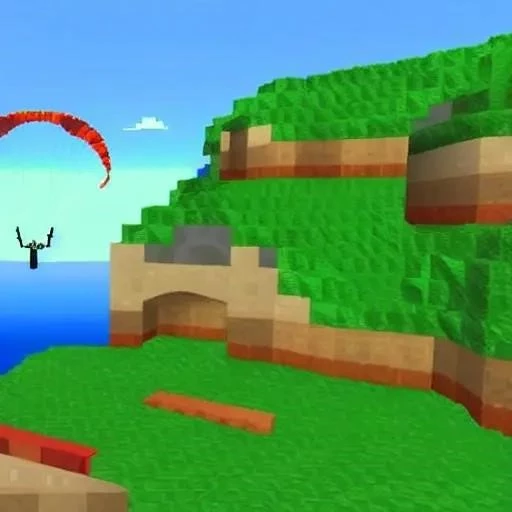For millennia‚ humanity has gazed skyward‚ dreaming of flight. Today‚ that ancient aspiration finds its most accessible and breathtaking expression in paragliding‚ an exhilarating sport that transforms mere mortals into soaring eagles. Far from a simple leap of faith‚ mastering paragliding‚ especially in challenging “steep” environments—whether real-world mountainsides or the virtual peaks of games like Ubisoft’s Steep—demands a profound understanding of aerodynamics‚ an unwavering connection with nature’s forces‚ and an adventurous spirit. This isn’t just about gliding; it’s about artfully dancing with the wind‚ strategically harnessing its power‚ and navigating the world from an unparalleled perspective‚ promising an experience that is both intensely personal and universally awe-inspiring.
The allure of paragliding lies in its deceptive simplicity: a fabric wing‚ a harness‚ and the open sky. Yet‚ beneath this minimalist facade lies a sophisticated interplay of physics‚ skill‚ and environmental awareness. From the heart-pounding acceleration phase on an irregular‚ steep slope to the serene moments of soaring thousands of meters above the earth‚ every second is a testament to human ingenuity and courage. It’s a journey that commences with a critical‚ often humorous‚ sprint where instructors joyfully observe students “running in the air‚” a pivotal moment transitioning from solid ground to the boundless freedom of the atmosphere.
| Aspect | Description | Reference/Further Information |
|---|---|---|
| Core Principle | Paragliding relies on the interaction of a fabric wing (canopy) with airflow to generate lift and glide‚ allowing pilots to fly without an engine. | FAI ౼ Paragliding Overview |
| Angle of Attack | Crucial for controlling trajectory‚ increased by pulling brakes which changes the wing’s profile‚ generating more lift and drag. | XC Magazine, How to Fly |
| Lift-to-Drag Ratio | A key performance metric. Modern paragliders boast ratios typically between six and ten‚ meaning for every unit of altitude lost‚ they travel six to ten units horizontally. | FAI ౼ Paragliding Overview |
| “Speed to Fly” Concept | Advanced technique involving continuous speed adjustments relative to wind‚ lift‚ and sink to maximize glide efficiency and optimize flight paths. | XC Magazine ౼ Speed to Fly |
| Steep Takeoffs | Often on irregular terrain‚ requiring pilots to maintain momentum and be ready to run intensely‚ even after initial lift-off‚ to ensure a smooth transition to flight. | Flybubble — Takeoff Tips |
At the heart of every successful flight‚ especially from a steep incline‚ lies the pilot’s mastery of the wing’s angle of attack. By skillfully manipulating the brakes‚ which fold down the trailing edge and increase the profile curve‚ pilots can adjust the wing’s interaction with the airflow. This action‚ remarkably precise and incredibly effective‚ fundamentally alters the glider’s flight mode‚ influencing both speed and descent rate. A more curved profile produces greater lift but also increased drag‚ transitioning the paraglider into a new‚ often slower‚ and steeper flight path. Conversely‚ a sudden‚ excessive application of brakes risks stalling the glider‚ where the angle between the wing and the airflow becomes too acute‚ causing the air to detach‚ and the wing to cease flying—a critical lesson learned early in any pilot’s journey.
For enthusiasts venturing into the immersive digital world of Steep‚ the mechanics of paragliding present unique challenges and rewards. Unlike the high-octane wingsuit‚ paragliding offers a more contemplative‚ yet equally thrilling‚ experience; The game intricately simulates the real-world principles‚ where holding “up” maintains height at the expense of speed‚ and holding “down” increases speed while sacrificing altitude. Expert players‚ like Yeti Society member Mstifye‚ reveal that the secret to gaining speed and mastering challenges lies in minimizing course adjustments and staying perilously close to the mountain face‚ effectively leveraging ground effect and thermal currents‚ mirroring real-world techniques for optimal performance.
As pilots progress from gentle slopes to truly steep hills‚ their repertoire expands dramatically. Initial lessons in controlling speed and executing turns evolve into advanced maneuvers like 360-degree turns‚ precision spot landings‚ and “big ears”—a technique used to increase the rate of descent by folding in portions of the wingtips. The concept of “Speed to Fly” becomes paramount‚ representing the constant‚ dynamic adjustments a paraglider’s speed requires in relation to wind‚ lift‚ and sink. Maximizing glide based on this nuanced relationship is a continuous process‚ transforming a good pilot into an exceptional one‚ fostering an almost telepathic connection with the wing and the surrounding air.
The future of paragliding‚ both recreational and competitive‚ is undeniably bright‚ propelled by continuous advancements in wing design and a growing community of passionate aviators. From the awe-inspiring feats of record-setters like Fyodor Konyukhov‚ who soared to an astonishing 4728 meters‚ to the harrowing‚ yet survivable‚ ordeal of Peng Yujiang‚ propelled to over 8000 meters by an unforeseen updraft‚ these stories underscore both the inherent risks and the profound human capacity for resilience and exploration. Integrating insights from AI-driven weather prediction and advanced aerodynamic modeling‚ pilots are increasingly equipped to navigate complex conditions‚ ensuring safer and more ambitious flights. This isn’t merely a sport; it’s a profound journey of self-discovery‚ offering unparalleled vistas and a unique perspective on our magnificent planet.
Embracing the complexities of paragliding‚ particularly the adrenaline-pumping challenges posed by steep takeoffs and mountainous terrain‚ ultimately unveils a world of unparalleled freedom and accomplishment. It’s a testament to humanity’s enduring quest to defy gravity‚ to harness the invisible forces of nature‚ and to experience the world from a vantage point once reserved only for birds. Whether you’re an aspiring pilot dreaming of your first flight or a seasoned veteran conquering new peaks‚ the skies beckon with endless possibilities. Join the growing legion of paragliding enthusiasts‚ and prepare to embark on an adventure that will forever change your perception of the world below and the boundless heavens above.






